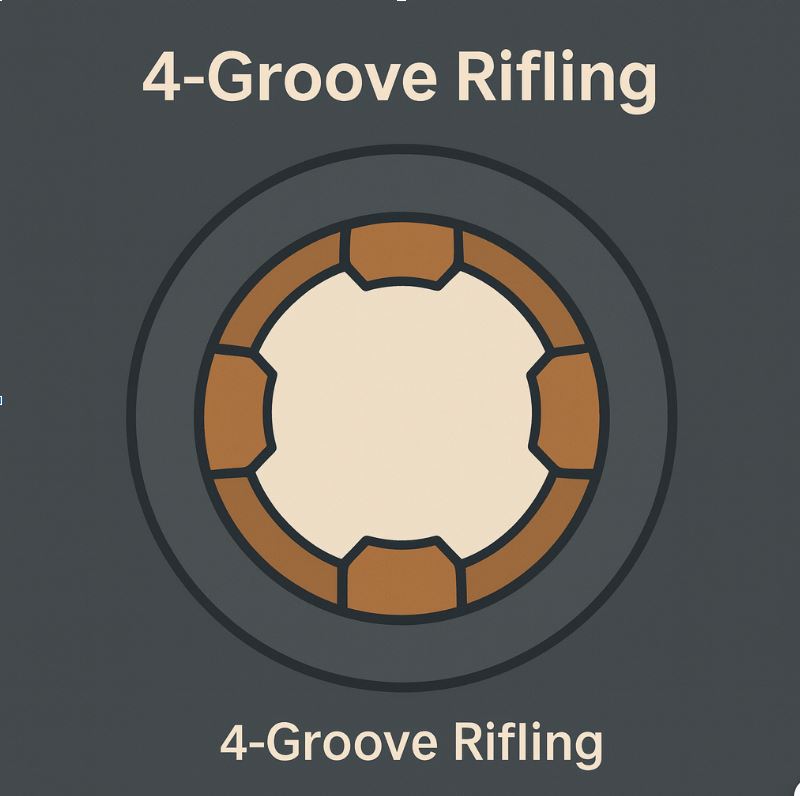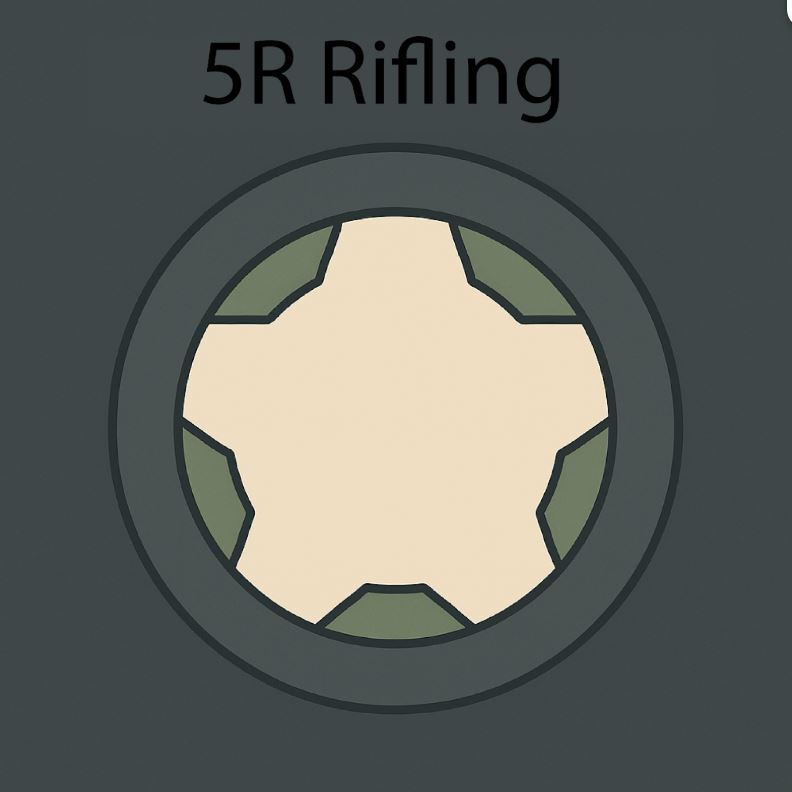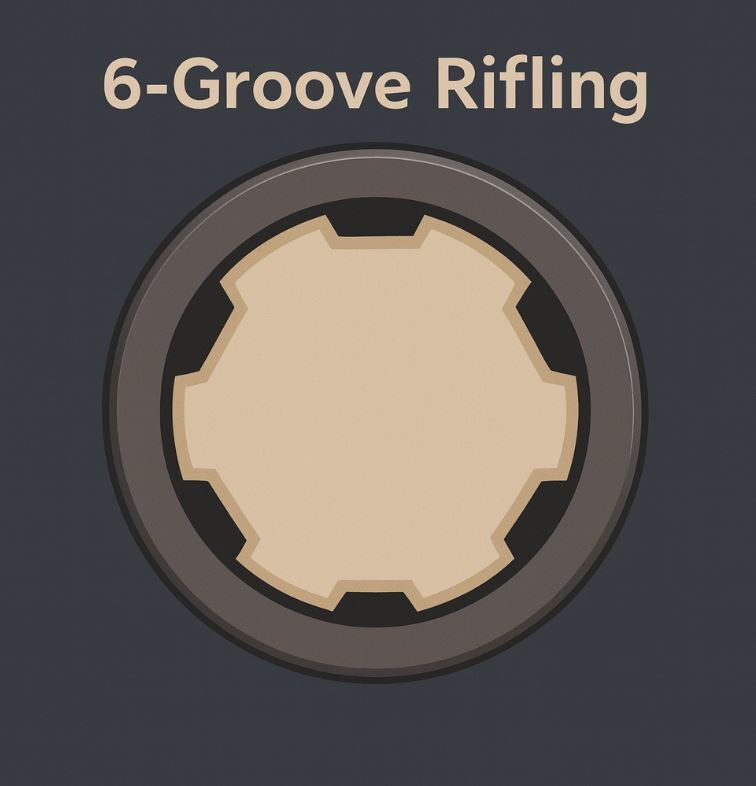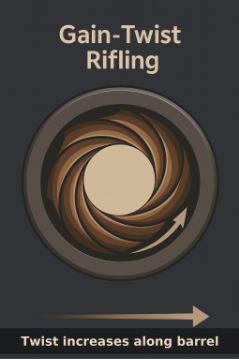Rifle Barrels 101: Anatomy, Key Variables, and How to Choose
Posted by Dan on Oct 29th 2025
Rifle Barrels 101: Anatomy, Key Variables, and How to Choose
Estimated read time: 4–6 minutes
Meta description: Learn the essential parts of a rifle barrel, which variables (twist, length, contour, material) affect performance, and a practical buyer’s checklist for choosing the right barrel for your use.
Intro
If you want the biggest single improvement to how a rifle performs, start with the barrel. It guides the bullet, sets spin, and has an outsized effect on accuracy, velocity, feel, and handling. This post covers the anatomy of a barrel, the variables that matter, and a concise checklist for choosing one that fits your needs.
Barrel anatomy — the terms you should know
- Bore — the internal diameter (caliber).
- Rifling (lands & grooves) — the helical grooves that spin the bullet.
- Twist rate — how far the rifling turns per full rotation (e.g., 1:10).
- Chamber — the rear shape that accepts the cartridge (headspace matters).
- Throat / leade — transition from chamber to rifling.
- Crown — muzzle end; a clean crown is critical for accuracy.
- Contour / profile — external shape (pencil, heavy, bull, fluted).
- Muzzle device — brake, compensator, or flash hider attached at the muzzle.
Types of rifling (with visual examples)
4-Groove Rifling

A traditional style with four lands and grooves. Common in many factory and military barrels, simple and effective.
Pros
- Even, predictable engagement with the bullet
- Simpler/faster to machine than many-groove barrels
- Proven, common profile — reliable for general use
- Grooves can be easier to clean than very fine rifling
Cons
- Sharper engraving can deform soft lead bullets more than 5R/polygonal
- Not inherently more accurate — depends on overall barrel quality and load
- Can trap more lead with unjacketed bullets if not cleaned
When to pick it: good, all-around choice for hunting/duty. For dedicated match or lead-bullet use, test against 5R or polygonal.
5R Rifling (rounded lands)

Features five lands and grooves with sloped sides to reduce fouling and bullet jacket deformation; popular in precision shooting.
Pros:
- Less jacket deformation → helps long, thin match bullets.
- Easier fouling/cleaning in some barrels.
- Often used in precision barrels — can improve consistency.
Cons:
- Not a guaranteed accuracy win — results vary barrel-to-barrel.
- Can be ammo- or setup-sensitive.
- Usually found on higher-end barrels (cost/availability).
- Can be more difficult to chamber
Bottom line: Good choice for a precision build, but not a magic upgrade — ammo, barrel maker, and load development matter more.
6-Groove Rifling

Six grooves are common in sporting and precision barrels. Groove count itself rarely causes major accuracy differences when barrels are well-made.
Pros
- Common and easy for some makers to produce.
- Smoother, more gradual bite into the bullet (can reduce jacket stress).
- Can spread wear across more lands in high-round-count/use cases.
Cons
- Slightly more contact area → can mean different fouling behavior and cleaning needs.
- No guaranteed accuracy advantage over 4/5-groove when twist, finish, and concentricity are equal.
- In some ammo/velocity combos it may change jacket deformation (highly ammo-dependent).
Polygonal Rifling

Rounded interior profile instead of sharp edges; can improve gas seal and make cleaning easier in some calibers.
Pros
- Better gas seal → slightly higher muzzle velocity.
- Less fouling → easier cleaning.
- Longer barrel life (less wear).
- Good consistency for service pistols.
Cons
- Don’t use plain lead bullets (lead buildup, pressure).
- Reloads may run hotter/produce higher pressure.
- Fewer aftermarket options; marginal gains vs match-grade traditional barrels.
Gain-Twist (progressive)

Twist rate increases along the barrel, easing bullet engagement and potentially improving stability; a specialty option.
Pros
- Gentler initial engagement → less bullet deformation and cleaner bore.
- Can extend barrel life (less throat erosion).
- May give a small velocity and long-range accuracy boost for long/high-BC bullets.
Cons
- More expensive and harder to manufacture.
- Harder to match or replace barrels consistently.
- Benefits are niche — many shooters see little difference vs. good constant-twist barrels.
- Less conventional data for load development.
Practical takeaway: The number of grooves matters less than the uniformity and finish quality. 5R and polygonal profiles are often chosen for reduced fouling and smoother bullet engagement.
Rifling isn’t one-size-fits-all — makers use different numbers of lands/grooves and different land/groove profiles to influence fouling, bullet engagement, and longevity. Below are the most common types and what they offer.
Key variables and how they affect performance
- Caliber / bore diameter — influences available bullets, recoil, and terminal effect.
- Twist rate — match to bullet length/weight; too slow = poor stabilization, too fast = excess stress.
- Barrel length — longer = higher velocity (within limits); shorter = lighter and more maneuverable.
- Contour (stiffness/weight) — heavy = stable, light = quick handling.
- Rifling type — cut, button, broach, hammer-forged.
- Material & finish — stainless vs chrome-moly; nitride or chrome coatings improve wear resistance.
- Crown quality — even, clean crown ensures consistent bullet exit gases.
Choosing the right barrel — quick buyer checklist
- Define use: hunting, precision, tactical, varmint, or general.
- Pick caliber and twist rate for intended bullet weights.
- Select length/contour balancing velocity vs. portability.
- Choose material/finish based on environment (stainless for wet, nitride for durability).
- Check manufacturer’s quality control — stress relief, lapping, chamber precision.
- Confirm muzzle device or suppressor compatibility.
Conclusion
A rifle barrel is the single most important component for accuracy and performance. Match your barrel’s length, twist, and contour to your purpose and ammunition, and invest in quality manufacturing and finish work.
Works Cited
- "Who Makes the Most Accurate Rifle Barrels?" Field & Stream, 2025, https://www.fieldandstream.com.
- "Barrels." Proof Research, 2025, https://proofresearch.com/barrels/.
- "Who Makes the Most Accurate AR-15 Barrels?" The Gun Zone, 2025, https://thegunzone.com.
- "Who Makes the Best Rifle Barrels?" Civil-War.net, 2025, https://civil-war.net.
- "Barrel Harmonics: The Key to Precision Shooting." The Gun Zone, 2024, https://thegunzone.com.

